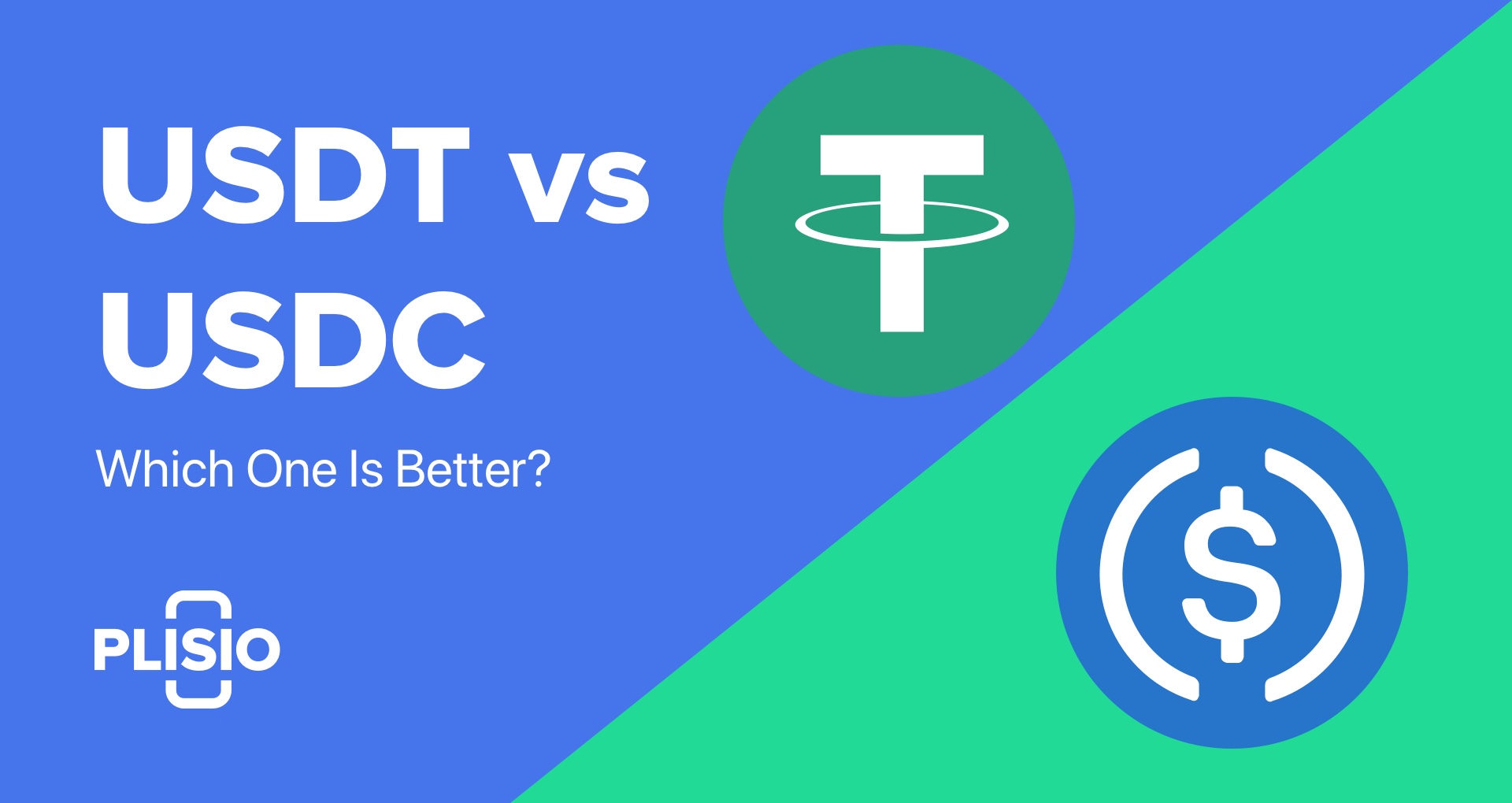USDT vs USDC: Which One Is Better?

With everyone being anti-fiat in the cryptocurrency community, it might be quite bizarre for stablecoins to keep up with cryptocurrencies like Bitcoin or Ethereum. Stablecoins do keep their pace - the combined market capitalization has reached over $150 billion, +$40 billion in the last year!
For the time being, USDC and USDT are the two largest stablecoins on the market. In this article, you will learn their key differences and which stablecoin meets your needs better.
First things First
What is a stablecoin? One thing remains clear - “stable” goes for the coin stability. Such coins work on a 1:1 conversion method, which means that another asset like the US dollar, euro or gold backs its value. This system makes a stablecoin equivalent to a certain currency amount.
When do you want to use a stablecoin? If you own a business or have your own enterprise where you accept crypto payments, stablecoins might be the best choice. In that case, you won’t need to trouble yourself with the cryptocurrency volatility problem and just enjoy other crypto benefits, such as lower fees, transaction speed and sensitive data protection.
It is like fiat currencies, only better!
The best way you can help your business is not only accept payments in stablecoins, but also set a convenient crypto payment gateway. Such payment processors provide for the most efficient and fast transactions of any cryptocurrency, including stablecoins. Beside all that, such services as Plisio offer you a wide range of useful tools for your business. You could customize your own invoices and accept payments without page redirects, right on your website.
And last, but not least: how do stablecoins work, exactly? When holding a stablecoin, the asset supporting the coin is automatically being reserved in a bank. Thus, this cash reserve constitutes a collateral for a stablecoin. This price stability explains why merchants resort to stablecoins when making or receiving payments.
What you need to know about Tether (USDT)
USDT, also known as Tether, is the very first stablecoin project launched by Bitfinex in 2014. Its value, just as of USDC, is asset-backed 1:1 to the US dollar. Tether is rank #3 in overall crypto market capitalization and, once bought, can be manipulated as well as any cryptocurrency. It goes right after Bitcoin and Ethereum with $78 billion assets worth. The coin stability is well ensured by the fiat currency of choice in reserve.
Tether’s assets are thought to be somewhat venturesome due to its operation principle. There are plenty of obligations and deposit certificates assuring that the number of tokens in disposition will remain unchanged or even greater than the current amount. However, as Tether Holdings claims it, the token holders should not be suspicious as the assets liquidity is the main priority, which makes deposit obligations the necessary means to stimulate the future assets growth.
The good thing about USDT is that it is produced when there is a demand for it. Every time you buy a Tether token, a corresponding amount of USD goes to a savings account so you could always change it back to USD if you reconsider your decision.
And what is USDC?
USDC or USD Coin is a Coinbase and Circle joint project launched in 2018. USDC is pinned 1:1 to the US dollar. USD Coin can only be issued by the CENTRE Network platform as Circle or Coinbase, which is different from USDT where Tether acts as the only issuer.
The routine audits are constantly being scheduled to guarantee that USDC is pegged to the actual dollar rate. This makes the coin extremely price-stable.
In terms of market cap, $42.7 billion of USD Coin makes for #6 and is 3 ranks behind Tether. However, decent coin governing and transparency makes it a lot more trustworthy than USDT.
Summing up the differences
Here are the key aspects that make USDC and USDT different:
Market Cap. USDC has a $42 billion market cap, while Tether’s market cap is over $72 billion.
Transparency. USDC is regularly being inspected with audits to make sure that the 1:1 ratio to the US dollar stays unchanged. Tether Holdings doesn’t make their audits public.
Blockchains supported. USDC follows the ERC20 standard only and operates on Ethereum, Solana, Algorand, etc. USDT, in turn, is more wide-spread and works well with both ERC20 and TRC20 networks and runs on such platforms as Tron, Omni, Solana, Ethereum, Algorand, etc.
Redemption process. The USDC coins are redeemed much easier as there are no deposits or obligations to comply with. Tether can be redeemed only based on their terms of service, thus making holders liable for the tokens in circulation.
Ready to get started?
You’ve already made up your mind and are ready to invest in crypto? It doesn’t matter what stablecoin you prefer - USDC for your transactions safety, or USDT for short-term trading on various platforms. Plisio can take care of any additional difficulties for you and your business. Enjoy ridiculously low fees, full anonymity and start accepting or trading crypto right away. Stepping into the stablecoin world is now easier than ever!
